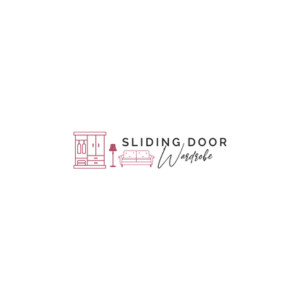A Buyer’s Guide to Choosing the Right Sliding Door Material
Sliding doors are more than just a way to access your patio or separate rooms they’re a major design element that influences the look, function, and feel of your space. Choosing the right material for your sliding door is essential for durability, aesthetics, insulation, and even maintenance.
In this guide, we’ll walk you through the most popular sliding door materials, their pros and cons, and tips on how to select the best one for your home or office.
1. Aluminum Sliding Doors
Overview:
Aluminum is a lightweight, strong, and corrosion-resistant metal, commonly used in contemporary homes and commercial spaces.
Pros:
- Sleek, modern appearance
- Very durable and resistant to rust
- Slim frames allow for larger glass panes and more natural light
- Low maintenance
Cons:
- Poor thermal insulation compared to other materials unless thermally broken
- Can dent under impact
- Often more expensive than vinyl
Best for:
Modern interiors, commercial buildings, and areas with mild climates.
2. uPVC (Vinyl) Sliding Doors
Overview:
uPVC (unplasticized polyvinyl chloride) is a popular choice for budget-conscious buyers due to its affordability and excellent insulation properties.
Pros:
- Excellent thermal and sound insulation
- Low cost and low maintenance
- Weather and moisture-resistant
- Available in various colors and finishes
Cons:
- Less strong than metal or wood; larger doors may require reinforcement
- Limited design flexibility
- May discolor over time in extreme heat
Best for:
Budget-friendly renovations, humid or coastal areas, and homes with insulation needs.
3. Wooden Sliding Doors
Overview:
Wood offers unmatched beauty, warmth, and character. It’s a timeless option that fits both rustic and elegant settings.
Pros:
- Natural beauty and aesthetic appeal
- Good insulation
- Can be painted or stained to match interiors
- Eco-friendly (if sustainably sourced)
Cons:
- Requires regular maintenance (sealing, painting, termite protection)
- Prone to warping or swelling in humid environments
- Usually more expensive
Best for:
Classic or rustic homes, eco-conscious buyers, and interiors where warmth and luxury are priorities.
4. Glass Sliding Doors
Overview:
Glass sliding doors are almost always used with another structural material (like aluminum or wood frames), but frameless glass panels are also gaining popularity.
Pros:
- Allows maximum natural light
- Offers unobstructed outdoor views
- Modern and luxurious appearance
- Easy to clean
Cons:
- Privacy may be an issue (can be solved with frosted or tinted options)
- Requires regular cleaning to avoid fingerprints and smudges
- May break under force if not tempered or laminated
Best for:
Patio entrances, modern interiors, and homes with scenic views.
5. Fiberglass Sliding Doors
Overview:
A newer entrant in the market, fiberglass combines the look of wood with superior durability and insulation.
Pros:
- High durability and weather resistance
- Low maintenance
- Great thermal performance
- Can mimic wood grain finish
Cons:
- More expensive than vinyl or aluminum
- Fewer style and color options
Best for:
Homes in extreme climates, and buyers seeking a wood look without the upkeep.
How to Choose the Right Material
When selecting a sliding door material, consider the following factors:
1. Climate
If you live in a coastal area or a region with high humidity, choose materials like uPVC, fiberglass, or treated aluminum that resist rust and moisture. Wood can swell or rot in such environments unless properly treated.
2. Insulation Needs
For areas where thermal efficiency is important, such as bedrooms or energy-efficient homes, go for materials with high insulation like uPVC or fiberglass. Aluminum can be made more efficient with thermal breaks.
3. Aesthetics
Wood and glass offer classic and modern beauty, respectively. Your choice should complement your home’s architecture and interior design. For example, rustic homes pair well with timber, while minimalist spaces suit glass or aluminum.
4. Maintenance
If you prefer a low-maintenance solution, uPVC and aluminum are great picks. Wooden doors require periodic sealing or repainting to prevent decay and keep their appearance fresh.
5. Budget
Vinyl is the most cost-effective option, while fiberglass and wood tend to be pricier. Aluminum falls somewhere in between. Remember to factor in long-term maintenance and energy savings as part of your total investment.
Final Thoughts
Choosing the right sliding door material isn’t just about appearance it’s about lifestyle, climate, and long-term value. Whether you’re going for the clean lines of aluminum, the cozy charm of wood, or the energy efficiency of uPVC, the right choice will elevate your home’s functionality and style.




Leave a Reply
Want to join the discussion?Feel free to contribute!